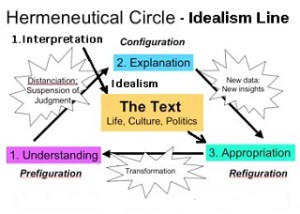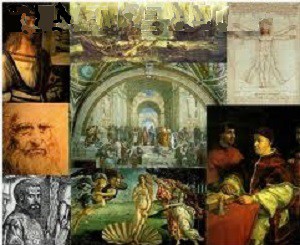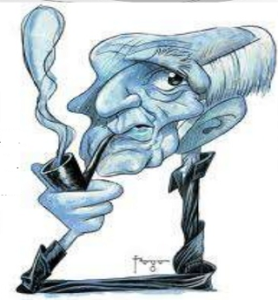
Holography is here to stay
Holography has already come to stay, there are already projection techniques such  use of cubes or pyramids of glass (holographic glass) or without glasses (no glass), such as the photos on the side.
use of cubes or pyramids of glass (holographic glass) or without glasses (no glass), such as the photos on the side.
As it is always the aggressive gaming industry that first emerges with new technologies, it was thus the augmented reality with Pokemons, and now the holography with glasses and games in Windows Holographic VR headset (Virtual Reality) with the handset of 350 grams, 200 Grams less than the HTC VIVE, both scheduled to launch this year.
The information contained in The Verge’s specialized website says that the design is comfortable on new Lenovo equipment using OLED panels with 1440×1440 resolution, more defined its Glasses Rift, but the prototype taken to the last CES 2017 event was not working (oh no!).
An important point is that its internal sensors allow the equipment is used if it is necessary to have an external detection camera; this is no small thing, since holographic environments with full immersion can arise from there.
The final price speculated on some sites, among them The Verge is that it will be close to $ 300, which here would give something around the R $ 1 thousand brazilian reals, but with taxes it is known there for the ceiling that goes.
Some Trump’s “Promises”
Today begins the mandate of the most controversial of a US president.
On immigration, it is not sophistry, of course he speaks of the 11 million clandestine migrants living in the country, but a lot already have children and families settled there, and the mere fact of being of another religion or race could never differentiate a person And their civil rights.
Reforming Washington, which calls for “Clinton’s friends” in many cases are nothing more than professionals or even people with a partisan preference for the Democrats, and for borrowing the idea of Abraham Lincoln in a famous 1863 speech in which he asked the union of Americans, but the context was quite different, and can be seen in the recent movie of the film Lincoln, where among other things fought for racial equality.
He wants to sign the biggest “tax revolution” in the country, today the ceiling is at 35% of collection of profits, he wants to limit to 15%, this only benefits the concentration of income and the consequences for social programs are more than obvious, There is going to be money
It will review all foreign trade, campaign against the Transatlantic Trade and Investment Partnership (TTIP) which would be a cooperation with the European Union, also the treaties with Canada and Mexico its neighbors and the NAFTA agreements will be revised, will be a commercial war .
Foreign policy is even more threatening, it is against peace agreements with Palestine, it will review the protection of NATO allies and as far as Syria will only fight against the Islamic state, it is more fuel in the bonfire of the war.
Without the two most industrialized nations in the world adhering to the proposed ecological programs from Rio 1922 (Rio92) to Paris 2015 (Cop2015) activists and defenders of the planet suffer a hard defeat, for Trump: “the concept of global warming was created by And for the Chinese to keep the US industrial sector uncompetitive”, he wrote on a twitter and replayed the campaign.
The most backward and hard-headed concept with the Americans themselves is the idea of erasing the entire Obama legacy, now admired all over the world, according to Stephen Moore, who was their camp advisor, there are at least 25 “executive orders” for Trump to reverse and erase what Obama has left.
Finally the legal aspect, because one can imagine that with so much authoritarianism, perhaps it could suffer an impeachment, the sudden death of Antonin Scala, member of the Supreme Court of there, and the indication of the substitute by Trump will give conservative majority to the Supreme, and Many laws will be reviewed.
If this is good news, on the other hand we can predict US isolation, a lot of internal crisis and a strong militancy already promised by activists, artists and Democrats
Hermeneutics, common sense and training.
With the concept of common sense, he will use another guiding concept: judgment, and will use for it something of Kant, after having criticized it, for him to judge: “it is, in short, not so much a faculty, but a requirement to be presented To all “(page 78).
use for it something of Kant, after having criticized it, for him to judge: “it is, in short, not so much a faculty, but a requirement to be presented To all “(page 78).
Finally it will present the concept guides: judgment to taste, here it clarifies clearly that it is not an ideal concept, nor a ‘matter of taste’, but something social:
“Taste is not only the ideal that presents a new society, but in the first place, under the sign of this ideal of ‘good taste’, what has been called ‘good society’ (page 84), Gadamer passed away in 2002 but could well serve for today.
If not ideal how to get at it? And he responds: “no longer through birth and status, but basically through the communion of his judgments, or rather, knowing how to rise from the foolishness of interests and the privacy of preferences to demand judgment.”
It is not the guiding concept, but the whole phenomenology is based on the experience, that is, the concepts and questions must be development and socially approved, that is:
“The experience has an immediacy that is subtracted from all opinions about its meaning. What we emphatically call experiencing means something unforgettable and irreplaceable, which is basically inexhaustible for an understandable determination of its meaning. “(Page 126), and so on.” Something is actually gained in each experience. “(P.
It is from this formulation that the idea of horizons, and fusion of horizons, will emerge, emphasizing that it is a particular concept of situation, which in dialogue with another means its position:
“This is not a real dialogue; One does not seek the understanding of a theme, since the objective contents of the dialogue are but one way of knowing the horizon of the other … the other becomes comprehensible in its opinions, from the moment it became recognized Its position and horizon, without, however, implying that we have come to understand ourselves with it … “(page 553)
But before concluding Volume I, I will try to answer fundamental questions: “Is it a correct and sufficient description of the art of historical understanding, that it is necessary to learn to move to other horizons? Is it possible to say, in this sense, that there are closed horizons? “(Page 554), which recalls Nietzsche’s objections to historicism and its” closed “connection with myth, and will clarify that all historical understanding of the Enlightenment was not If not the romantic perspective of the solitary individual, just as the closed horizon “which would surround a culture is an abstraction” (p. 455), since the “horizon is before, something in which we tread our way and with us make the way” (Idem), that is, our goal.
This is not a summary, not even a drop of Gadamer’s thought, but here we try to delineate some reading keys in order to indicate a mature and fruitful contemporary thought.
GADAMER, H.G. Truth and Method, London,New York: Continuum, 1975. (pages in Brazilian Edition
Hermeneutics and this problem
After clarifying the question of method, it is important because of the question  of science, it must be understood that this is not its fundamental problem, although it is related to knowledge and truth it is, so Gadamer (p. 32)
of science, it must be understood that this is not its fundamental problem, although it is related to knowledge and truth it is, so Gadamer (p. 32)
“The phenomenon of understanding that pervades not only everything that concerns the world of the human being. Its purpose is to search everywhere for the experience of truth, which goes beyond the field of control of scientific methodology, and of its own legitimacy, wherever it may be found. “(Page 30)
The main aim, though not explicitly stated, is to demonstrate the fragility of contemporary philosophical thought, for he saw the night of Western thought:
“… the judgment that, in our time, flooded with rapid transformations, is threatened with obscuration. What is transforming imposes itself on sight, incomparably more than something that continues as it has always been. The perspectives that result from the experience of historical transformation are, for this reason, always running the risk of becoming distortions, for forgetting the concealment of what persists “(page 34).
Gadamer wants to retake the good humanistic tradition, of course this is a judgment of values, but we have already developed something here, but a central point is the Hegelian contribution on “formation”:
“Here training does not mean more culture, that is, the perfection of faculties and talents. The ascension of the word formation awakens, more than that, the ancient mystical tradition, according to which man brings in his soul the image of God, according to which he was created, and has to develop it in himself. ” (Page 50), this does not depend on religiosity, it means interiority.
He also takes up concepts from Hegel, who used the concept of formation, in this way “it was precisely this that, following Hegel, we emphasized as a universal characteristic of formation, to remain open to the different, to other more universal points of view . “(Pages 50-58).
That is why we have written from the beginning of this blog: “the in-form”, the word information has this meaning and this can also be found in the literature of so-called “Information Sciences”, clarifies using Vico’s concept of “common sense” , Which is very common:
“… not only that universal capacity that exists in all men, but, at the same time, the sense that establishes community. It is a sense for justice and for the common good … it seems to have a virtue of social intercourse, but there is, in fact, a moral foundation, even a metaphysical one. “(Pages 70-76).
Gadamer will define this starting from the ideas of common sense and formation.
GADAMER, H.G. Truth and Method, London,New York: Continuum, 1975. (pages in Brazilian Edition).
Truth & Method and Inductive Logic
As we have already explained, the revised sketch of The Problem of Historical Consciousness  after the writing of Truth and Method, the maximal work of Hans-Georg Gadamer, is a good introduction to this work which clarifies many questions of contemporary philosophy: its problem which is clear Among others is its relation to social change, the question of method and especially what is true, but will have no less important minor points, such as dialogue.
after the writing of Truth and Method, the maximal work of Hans-Georg Gadamer, is a good introduction to this work which clarifies many questions of contemporary philosophy: its problem which is clear Among others is its relation to social change, the question of method and especially what is true, but will have no less important minor points, such as dialogue.
Taking up the humanist tradition, he will re-read St. Thomas, St. Augustine and Vico, and clarifies the main problem of the philosophy of our time: “it differs from the classical tradition of philosophy because it does not represent an immediate and uninterrupted continuation of the latter.” Gadamer, 1997, p.35).
He criticizes the instrumentalisation of philosophical thought in the West that made him: whose relations with concepts became “a strange disengagement, whether their relations with these concepts are of the sort of erudite, not to say archaizing, or of the sort of technical manipulation , Which makes of concepts something like tools “(p.36).
He will critique what is called as the sciences of the spirit and will place as transcendent within an aesthetic dimension, denying the context of the logic of Stuart Mill, who claims to have a more correct formulation in the Treatise of Human Nature, and all the misconception of this concept.
He quotes the author J.G.Droysen, a scholar of the history of Hellenism, as an important attempt to give a new sense to history: “that the sciences of spirit should be founded in the same way as an independent group of sciences.” (Page 43).
He points to Stuart Mill’s induction logic, and even criticizes Scherer and Dilthey in stating that even these: “it remains the model of the natural sciences that guides the scientific self-conception of both” (page 44), it is easy to observe the consequences of A model that proposes to be critical of the romantic model, but ends up returning to its own core.
He asserts that even Dilthey came to the conclusion that Helmhotz made, that there is no method for the sciences of the spirit, and that method here: “If the other conditions, under which the sciences of the spirit are, Their way of working, perhaps much more important than inductive logic. “(Page 45)
We can not deny it, after all, Hegel wrote the Phenomenology of the Spirit, and even his critics sought a method to adjust it to historical consciousness, he clarified that the answer they gave “to this question is not enough … follow Kant, for being guided by the concept Of science and of knowledge according to the model of the natural sciences and to seek the striking singularity of the sciences of the spirit in the artistic moment (artistic feeling, artistic induction) “(page 45)
GADAMER, H.G. Truth and Method, London,New York: Continuum, 1975. (pages in Brazilian Edition).
Hermeneutics and the end of idealism
It was Husserl who made the human sciences out of the Neo-Kantian slumber,  as described by Gadamer in speaking of what he called “hermeneutics of facticity”: “his analyzes of the” world of life “(Lebenswelt) and the anonymous constitution of all meaning and meaning Which form the soil and texture of experience, have definitively shown that the concept of objectivity represented by the sciences was only a particular case “(Gadamer, p.39).
as described by Gadamer in speaking of what he called “hermeneutics of facticity”: “his analyzes of the” world of life “(Lebenswelt) and the anonymous constitution of all meaning and meaning Which form the soil and texture of experience, have definitively shown that the concept of objectivity represented by the sciences was only a particular case “(Gadamer, p.39).
However Husserl was still attached to a subjective metaphysics of the phenomenon, such as Hegel would define as the Phenomenology of the Spirit, and then the old opposition between nature and spirit is reviewed, a fact almost unnoticed and emphasized by Gadamer: “the Human sciences and Nature must be understood from the intentionality of universal life “(ibid.).
Thus, with the resumption of the question of being, Husserl’s discoveries, when deepened by Heidegger, gave a sense of the most radical phenomenology: in realizing: that it is not necessary to separate, on the level of knowledge, the being of the nature of the historical being ” As Dilthey did … on the contrary, the mode of knowledge proper to the natural sciences is a kind of derivative of understanding, as Heidegger says in Sein und Zeit, ‘applies to the legitimate task of apprehending things [the Vorbandene, the entity ´Subsistent ‘] in its essential incomprehensibility “(Gadamer, pp. 39-40).
Heidegger’s knowledge assumes an ontological status, said in a seemingly complicated way, but is not, unlike [ideal knowledge]: “Understanding is the original form of realization of being-there human while being-in-the-world.” (Page 40).
Here the differentiation of practical interest and theoretical interest, understanding is the way of being-there that constitutes it as “know-being” (savoir-être) and “possibility” (idem).
Gadamer himself explains that for traditional hermeneutics, the Heideggerian theses seem provocative, because it explains, the verb Versteben (to understand in German) has two meanings: to understand the meaning of something, and to be understood in something.
While understanding (versteben) can mean that we understand something like going to the moon or the operation of an equipment, already the know-how, has the sense of ability, and this means to perform a practical task, only there being differentiation of theory and practice in the plane Of training rather than at the theoretical level. In the textual saying of Gadamer: “He [Heidegger] seems to be essentially distinguished from the understanding that one obtains in scientific knowledge” (page 41).
Although we are in the middle of the text, it can be said that it is a conclusion: “if they finally reduce to the common knot of a ‘I know how to occupy’ that is, an understanding of itself in relation to something” (p. 41), in italics in the original
Hans-Georg Gadamer, “The Problem of Historical Consciousness,” in “H.-G. Gadamer,” special issue, Graduate Faculty Philosophy Journal 5:1, 1975, page number is brazilian edition.
Consciousness between epistemology and method
It is common sense that what we call interpretation is intimately bound up with the method and worldview that we have, but in practice we stay in the “it’s my opinion.”
method and worldview that we have, but in practice we stay in the “it’s my opinion.”
Gadamer goes deeper into this theme by saying that “what modern consciousness assumes precisely as ‘historical consciousness’ – a reflective position in relation to all that is transmitted by tradition.” (page 18), that is, “historical no longer beatifically hears the voice that comes to him from the past, but when he reflects on it, he re-places it in the context in which it originated, in order to see the relative meaning and value that are proper to it “(idem) .
And this sentence of interpretation “goes back to Nietzsche, according to which all statements derived from reason” are susceptible of interpretation “(p. 21).
However, he returns to Hegel to clarify that “the human sciences possess with the natural sciences, a link that distinguishes them precisely from an idealistic philosophy: the human sciences also pretend to constitute themselves as legitimate empirical sciences, free from all metaphysical intrusion, and They reject all philosophical construction of universal history (idem), and here we enter into the question of method.
The idea of adopting scientific methods of the natural sciences prevented the human sciences from taking a “radical consciousness of themselves” (idem), and asks at the end of the paragraph: “Why not rather the old Greek concept, Of method should prevail ? “(Page 21)
Aristotle uses this to explain the question of method: “The idea of a single method, which can be determined even before investigating the thing, constitutes a dangerous abstraction, it is the very object that must determine the proper method to investigate it”
The Brazilian translation has 71 pages, is easy and simple to read, and I consider it useful for an introduction to Gadamer’s masterpiece “Truth and Method”.
Hans-Georg Gadamer, “The Problem of Historical Consciousness,” in “H.-G. Gadamer,” special issue, Graduate Faculty Philosophy Journal 5:1, 1975, page number is brazilian edition
Consciência entre a epistemologia e o método
Sabe-se no senso comum que o que chamamos de interpretação está intimamente ligado ao método e visão de mundo que temos, mas na prática, ficamos no “é minha opinião”.
Gadamer vai mais fundo neste tema, ao colocar que “aquilo que a consciência moderna assume precisamente como ‘consciência histórica´- uma posição reflexiva com relação a tudo que é transmitido pela tradição.” (pag. 18), ou seja, “a consciência histórica já não escuta beatificamente a voz que lhe chega do passado, mas, ao refletir sobre a mesma, recoloca-a no contexto em que ela se originou, a fim de ver o significado e o valor relativos que lhe são próprios” (idem).
E sentencia: “esse comportamento reflexivo diante da tradição chama-se interpretação” (pag. 19), e explica que essa noção de interpretação“ remonta a Nietzsche, segundo o qual todos os enunciados provenientes da razão“ são suscetíveis de interpretação” (pag. 21).
Entretanto retorna a Hegel para esclarecer que “as ciências humanas possuem com as ciências da natureza, vinculo que as distingue precisamente de uma filosofia idealista: as ciências humanas possuem igualmente a pretensão de se constituir como legítimas ciências empíricas, livres de toda intrusão metafísica, e recusam toda construção filosófica da história universal (idem), e aqui entramos na questão do método.
A ideia de adotar métodos científicos das ciências da natureza, impediram que as ciências humanas tivessem procedessem a uma tomada de “consciência radical acerca de si mesmas” (idem), e pergunta ao final do parágrafo: “Porque não antes o conceito antigo, grego, de método deveria prevalecer?” (pag. 21)
Utiliza Aristóteles para explicar a questão de método: “a ideia de um método único, que se possa determinar antes mesmo de investigar a coisa, constitui uma perigosa abstração, é o próprio objeto que deve determinar o método apropriado para investiga-lo” (idem).
A tradução brasileira tem 71 páginas, é de leitura fácil e simples, e considero útil para uma introdução na obra prima de Gadamer “Verdade e Método”.
GADAMER, H.G. O problema da consciência histórica, 3ª. Edição. Rio de Janeiro: FGV, 2006.
The problem of consciousness
We emphasize that although Bauman’s sociology deals with social issues, there is a  problem of “net awareness” and in our view a relation to hermeneutics, but how to deal with the problem of consciousness, Husserl would say: what consciousness must be “something “And therefore it is not possible to treat it with idealism, which sees something outside the subject.
problem of “net awareness” and in our view a relation to hermeneutics, but how to deal with the problem of consciousness, Husserl would say: what consciousness must be “something “And therefore it is not possible to treat it with idealism, which sees something outside the subject.
The best book on the question is Truth and Method of Hans-Georg Gadamer, but a book written earlier, which he himself said would be expendable for being an outline of his larger work, “The Problem of Consciousness History” in our view has something New and important.
The author himself says in the introduction that, when invited to conferences at the University of Louvain, that the problem of “historical consciousness” is something that involves Europe, it was only in Germany “that theme played a central role in philosophy, especially Thanks to Wilhelm Dilthey … outside the sphere of German culture, the romantic tradition of the Geitesuwisenschaften *“(page 10), is more related to the philosophy of nature.
It is for this reason that, in our view, this seminal work of Truth and Method not only deepens the problem of “historical consciousness,” but rather uncovers the relationship with the philosophy of nature, which outside Germany profoundly influenced modern state theories .
The translation, which comes from the French edition of 1996, is already revised by Gadamer himself and is therefore already a rereading, and in it there is an important question about the reproductive arts and their obvious relationship with the technologies, whereas in the German conception “Seek parity with the natural sciences” (page 11).
According to Gadamer, if Dilthey set out to provide an epistemic basis for understanding the question, he was not as an interpreter of text, but as a theorist of the method of a historical school who did not see “the comprehension of texts or fragments of the past as his goal Last “(quote from Gadamer himself), his hermeneutic view as Schleimacher’s successor, hopes to understand how history can” ultimately be understood “(p.12).
“Hermeneutics is the universal method of historical science” (page 12).
* Geitesuwisenschaften or “sciences of spirit” is a set of human sciences such as philosophy, history, philology, social sciences, and sometimes even theology and jurisprudence, that are traditional in German universities.
Hans-Georg Gadamer, “The Problem of Historical Consciousness,” in “H.-G. Gadamer,” special issue, Graduate Faculty Philosophy Journal 5:1, 1975, page number is brazilian edition.
New yahoo says what came
After the July 2016 sale of Yahoo to the Verizon digital electronics industry for $ 4.8  billion ($ 15 billion), now the first changes is announced, the most important is the departure of CEO Marissa Mayer, and the name that may be Altaba.
billion ($ 15 billion), now the first changes is announced, the most important is the departure of CEO Marissa Mayer, and the name that may be Altaba.
The move signaled the end of an era, as Yahoo, in addition to its services and billions of visitors per month, was responsible at the beginning of the Web for many people entering the network.
Now it is known that pieces of the new company Altaba, the name says a lot, will be in use by the mega-site sales Alibaba and the Japanese internet portal, so far called Yahoo Japan, but that could also be renamed.
With the departure of the CEO, the idea is to turn it into an investment site and a board of directors that will be reduced from 11 to 5 people, ensuring agility and good business.
The statements were not official, but since the data leak that occurred in December 2016, high around data of 1 billion users, that is, the largest in history, the cloud about the future of the company is undoing.
At this time and after a second leak the business almost backed down
This new investment model, that is, using websites and capturing resources in digital networks, can have an impact on the world market, even though governments go back to the previous model that was founded on companies having resources and jobs in the country itself.
Zygmunt Bauman died (1925, 2017)
He died on Monday (9 January), the Polish sociologist (Poznan, 1925) who  was of Jewish family, and fled his country and Nazism to the former Soviet Union, and was later a member of the Communist Party, from where Was expelled because of his works. He was a professor emeritus at the University of Leeds, where he passed away at 91 years of age. He created concepts such as liquid modernity and net love, but he did not understand the power of social networks, which he criticized harshly and did not adequately elaborate the crisis of modernity, predicting that it would go a long way until the inauguration of a new era, analyzing the crisis of the state.
was of Jewish family, and fled his country and Nazism to the former Soviet Union, and was later a member of the Communist Party, from where Was expelled because of his works. He was a professor emeritus at the University of Leeds, where he passed away at 91 years of age. He created concepts such as liquid modernity and net love, but he did not understand the power of social networks, which he criticized harshly and did not adequately elaborate the crisis of modernity, predicting that it would go a long way until the inauguration of a new era, analyzing the crisis of the state.
Between works, still little read and analyzed, are like the Culture with Praxis (1973, without translation in Brazil), Challenges of the Modern World (2015) and The Wealth of Few Beneves All Us? (2015) because they are very recent.
I countered his book Lives Wrong I analysed in a post, the book The contempt for the masses, and also made analysis of his modernity locked in several posts, and also in another post I made a synthesis of his “liquidity” with the question of consciousness.
The last analysis we did of Bauman was an interview given to the newspaper El País in january 06 of the 2016, in which the newspaper itself affirms its pessimism. “His diagnosis of reality in his later books is highly Critical.”
Certainly his two works deserve to be read, he is a profound thinker, but I reaffirm my point of disagreement, although we live in times of setbacks, historically mankind has always managed to overcome its greatest difficulties on the path of progress for all, what we are living is An end to an “age” even though we do not know what will come next, there is certainly a demand for structural changes in society.

